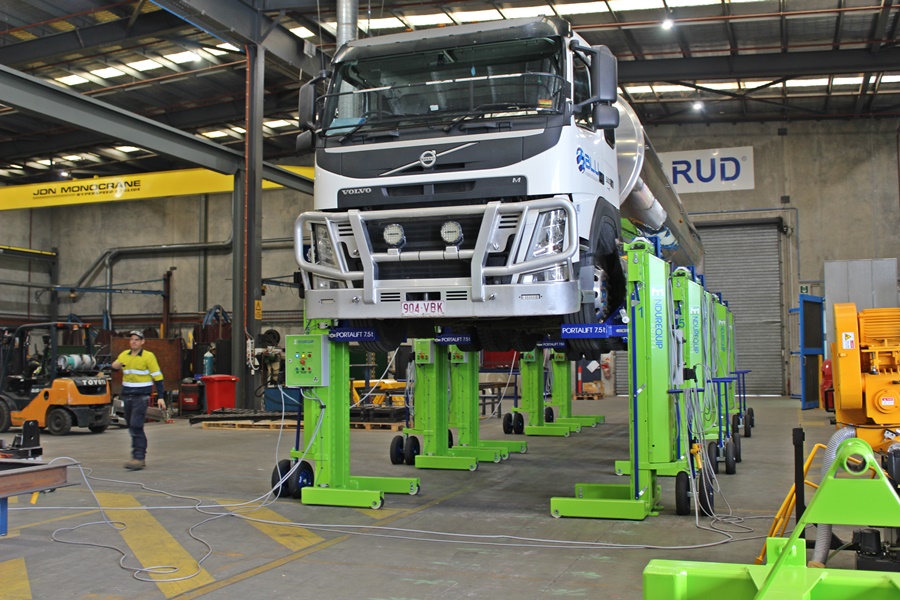
Part 2 of the 2-part article. Click here to read Part 1.
Installation and maintenance tips for your 4 post truck hoist
Once you have chosen the right 4 post truck hoist for your workshop, proper installation and maintenance are crucial to ensure its optimal performance and longevity. Here are some tips to keep in mind:
Professional Commissioning It is highly recommended to have your truck hoist professionally commissioned or installed. A professional technician will ensure that the hoist is correctly positioned and safe to operate. This is essential for both safety and efficient operation.
Regular Inspections Perform regular inspections of your hoist to identify any signs of wear or damage. Check for loose bolts, hydraulic leaks, or any other issues that may affect the hoist's performance. Addressing these problems promptly can prevent more significant issues down the line.
Lubrication Proper lubrication is crucial to keep your hoist running smoothly. Follow the manufacturer's guidelines on the type and frequency of lubrication required. Regularly lubricate all moving parts, such as cables, pulleys, and bearings, to minimise friction and ensure optimal performance.
Operator Training Ensure that all workshop staff who will be operating the truck hoist are properly trained. This includes familiarising them with the hoist's controls, safety features, and operating procedures. Proper training can prevent accidents and ensure the hoist is used correctly.
By following these installation and maintenance tips, you can maximise the lifespan of your truck hoist and keep it operating at its best.

Safety precautions when operating a 4 post truck hoist
Safety should always be a top priority when operating a truck hoist. Here are some essential safety precautions to keep in mind:
Read the Manual Familiarise yourself with the manufacturer's manual and instructions before operating the hoist. Understand the safety features, controls, and operating procedures.
Inspect the Hoist Before each use, visually inspect the hoist for any signs of wear, damage, or hydraulic leaks. Check that all safety mechanisms are in place and functioning correctly.
Securely Position the Vehicle Ensure the vehicle is correctly positioned on the hoist's wheel cradles before lifting. Use wheel chocks to prevent any unintended movement.
Proper Lifting Points Identify and use the correct lifting points on the vehicle to prevent damage. Use vehicle stands to free up the hoist to lift another vehicle. Refer to the vehicle's manual for guidance.
Avoid Overloading Never exceed the weight capacity of the hoist. Overloading can lead to structural failure and accidents.
Stay Clear Keep all body parts clear of moving parts while operating the hoist. Avoid reaching under the vehicle or between the hoists.
Use Safety Locks Engage the hoist's safety locks once the vehicle is lifted to prevent any accidental lowering.
Proper Lowering Procedure Follow the manufacturer's instructions for the correct procedure to lower the vehicle safely. Avoid sudden or uncontrolled lowering.
By following these safety precautions, you can minimise the risk of accidents and ensure a safe working environment for yourself and your employees.
Without Trucks, Australia Stops! But when trucks need to go, Endurequip keeps them going!
If you want to know how the team at RUD can help you, please call 07 3809 1300 or fill out an enquiry form here.
Fill out our easy form and we will be in touch soon with a tailor made quote.


I value the simplicity of design and ease of maintenance. Unlike other complicated electronic hoists on the market, the Portalift hoist are simple to service, with spare parts easy to get. This is important when you need your hoists to keep operating with minimum disruption. Portalift hoists are an asset to any workshop, heavy duty and reliable.
